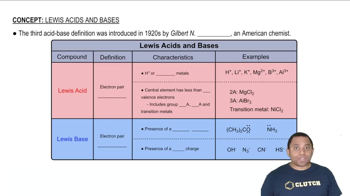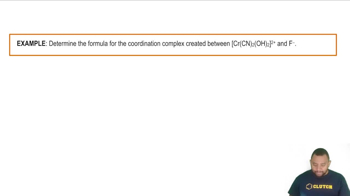Textbook Question
Draw the structure of the following complexes. What are the oxidation state, coordination number, and coordination geometry of the metal in each?
(b) [Cr(NH3)2(C2O4)2]NO2
 Verified step by step guidance
Verified step by step guidance



Draw the structure of the following complexes. What are the oxidation state, coordination number, and coordination geometry of the metal in each?
(b) [Cr(NH3)2(C2O4)2]NO2
Draw the structure of the following complexes. What are the oxidation state, coordination number, and coordination geometry of the metal in each?
(a) Pt(en)2
Draw the structure of the following complexes. What are the oxidation state, coordination number, and coordination geometry of the metal in each?
(b) [Co(H2O)5Cl]SO4]
What is the systematic name for each of the following coordination compounds?
(a) [Cu(NH3)4]SO4
(b) Cr(CO)6